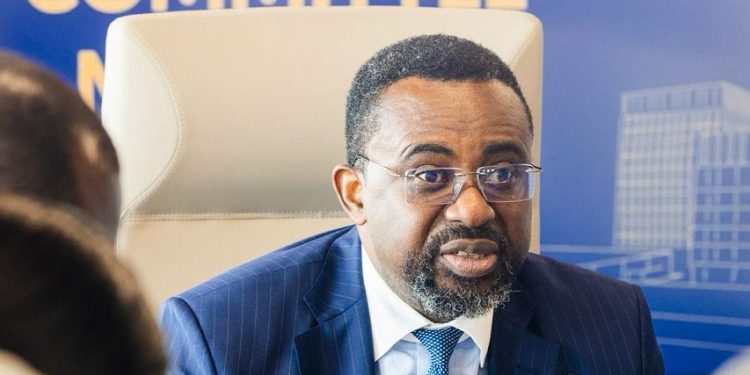The Bank of Ghana’s (BoG) Monetary Policy Committee (MPC) has announced a significant reduction in the prime rate, cutting it by 350 basis points to 21.5%.
The decision, taken at the MPC’s 126th meeting held from September 15 to 17, 2025, comes on the back of sustained disinflation, a stronger cedi, and robust external sector performance.
Inflation hits four-year low
Headline inflation dropped further to 11.5% in August 2025, the lowest reading in four years and down from 12.1% in July.
This marks the eighth consecutive month of easing inflation, driven by prudent monetary policy, appreciation of the cedi, strong liquidity management, fiscal discipline, and improved food supply.
The Bank’s core inflation measure, which excludes energy and utility items, also recorded declines, while inflation expectations among consumers, businesses, and the banking sector fell in line with the broader disinflation process.
“Given the current state of macroeconomic conditions, the Committee was confident that inflation would continue to ease in the near term, and reach the medium-term target of 8 ± 2 percent by the final quarter of the year,” the MPC statement noted.
Cost of credit expected to decline
The cut in the policy rate has already begun to filter through the money market.
Yields on short-term government securities have dropped sharply, with the 91-day Treasury bill rate falling from 13.4% in July to 10.3% in August 2025.
Average lending rates also eased from 26.6% to 24.2% over the same period.
The Bank of Ghana expects the latest policy rate cut to further lower the cost of credit for businesses and households in the months ahead, boosting investment and consumption.
Strong domestic growth momentum
The Ghanaian economy continues to demonstrate resilience.
Data from the Ghana Statistical Service shows that the economy grew by 6.3% in the second quarter of 2025, up from 5.7% in the same period last year.
Excluding oil, growth was even stronger at 7.8%.
The services sector led the expansion, growing by 9.9%, while agriculture expanded by 5.2%.
The Bank of Ghana’s Composite Index of Economic Activity also grew by 6.1% in July 2025, compared to 1.9% a year earlier, reflecting gains in trade, consumption, and industrial output.
Confidence surveys conducted in August 2025 confirmed optimism across the private sector.
Consumer confidence remained high, while business confidence improved as firms met short-term targets and expressed optimism about future prospects.
Fiscal consolidation takes hold
Government fiscal operations up to July 2025 showed strong consolidation efforts.
The overall fiscal deficit on a commitment basis was 1.1% of GDP, outperforming the 2.1% target.
The primary balance recorded a surplus of 1.0% of GDP, better than the targeted 0.5%.
At the same time, Ghana’s public debt stock fell sharply to 44.9% of GDP at the end of July 2025, down from 61.8% at the end of December 2024.
Analysts attribute this decline to debt restructuring efforts and disciplined fiscal management.
Banking sector strengthens, but risks remain
Ghana’s banking sector reported strong performance in the first eight months of 2025.
The industry’s Capital Adequacy Ratio (CAR) rose to 17.7% in August 2025 from 10.2% a year earlier, reflecting improved capitalisation and profitability.

Non-performing loans (NPLs) fell to 20.8% from 24.8% in the same period, aided by growth in credit and a reduction in bad loan stock.
However, the MPC warned that elevated credit risks remain and stressed the importance of banks adhering to recapitalisation plans and regulatory guidelines.
External sector buoyed by gold and cocoa
The external sector posted a robust trade surplus of $6.2 billion for the first eight months of 2025, compared with $2.1 billion in the same period last year.
Export earnings, mainly from gold and cocoa, surged, far outpacing import growth.
As a result, gross international reserves climbed to $10.7 billion (4.5 months of import cover) as of the end of August 2025, up from $8.98 billion at the close of 2024.
The cedi has been one of the world’s strongest-performing currencies this year, appreciating by 21% against the US dollar through September 12, 2025.
The Bank attributes this to strong external inflows, effective liquidity management, and fiscal consolidation.
Risks and outlook
Despite the positive trends, the MPC flagged potential risks.
A possible upward review of utility tariffs could reintroduce some inflationary pressures in the medium term.
On the global front, geopolitical uncertainties and slowing trade remain concerns, even as global inflation trends downward.
Nonetheless, the Committee expressed confidence that a combination of strong reserve buffers, ongoing fiscal consolidation, and the current monetary policy stance would sustain disinflation and support growth.
Additional measures
In a related move, the Bank of Ghana announced adjustments to the Net Open Position (NOP) limits for banks.
Effective October 1, 2025, the single currency NOP limit has been revised from ±5 per cent to between 0 per cent and –10%.
The move is expected to reduce currency risk exposure in the banking system while enhancing stability in the foreign exchange market.












